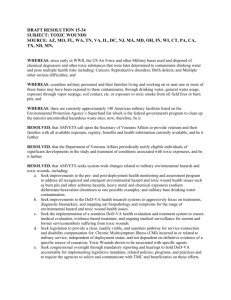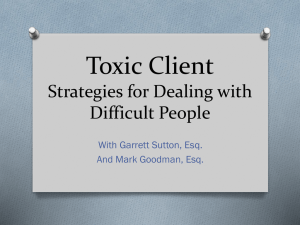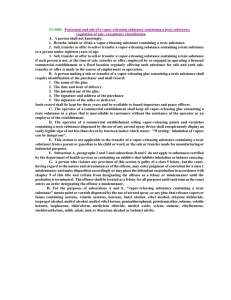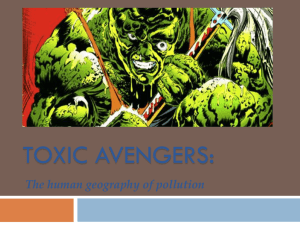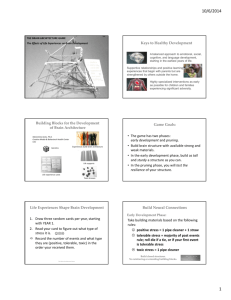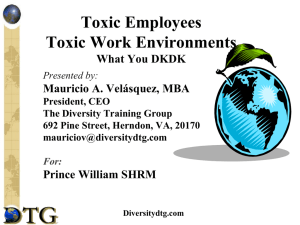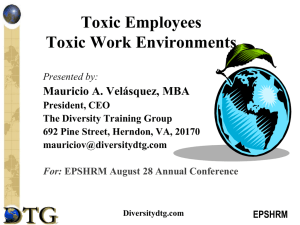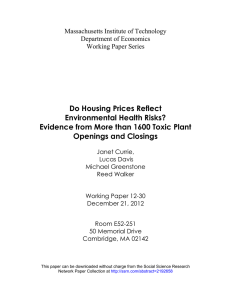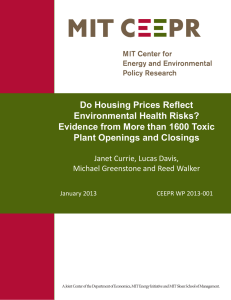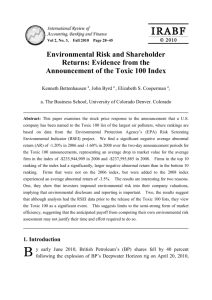Toxic Landscape Plants.pub
advertisement
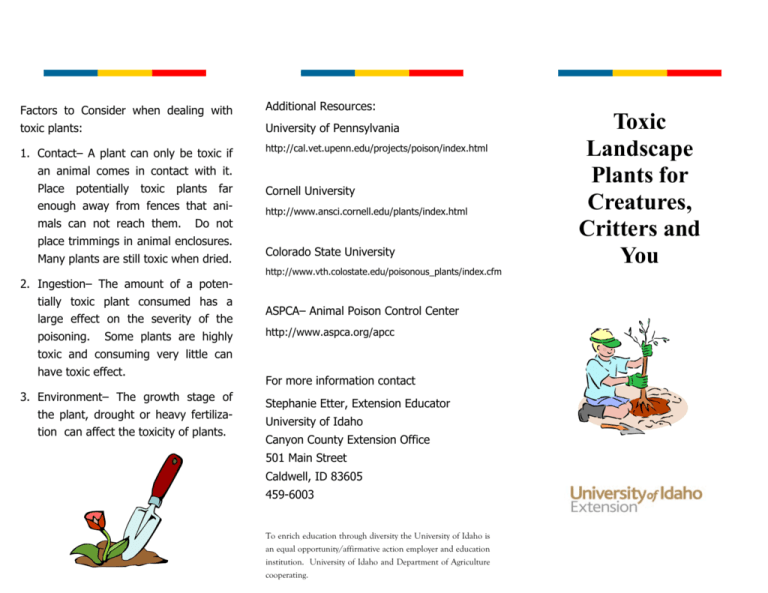
Factors to Consider when dealing with Additional Resources: toxic plants: University of Pennsylvania 1. Contact– A plant can only be toxic if http://cal.vet.upenn.edu/projects/poison/index.html an animal comes in contact with it. Place potentially toxic plants far enough away from fences that animals can not reach them. Do not place trimmings in animal enclosures. Many plants are still toxic when dried. 2. Ingestion– The amount of a potentially toxic plant consumed has a large effect on the severity of the poisoning. Some plants are highly Cornell University http://www.ansci.cornell.edu/plants/index.html Colorado State University http://www.vth.colostate.edu/poisonous_plants/index.cfm ASPCA– Animal Poison Control Center http://www.aspca.org/apcc toxic and consuming very little can have toxic effect. 3. Environment– The growth stage of the plant, drought or heavy fertilization can affect the toxicity of plants. For more information contact Stephanie Etter, Extension Educator University of Idaho Canyon County Extension Office 501 Main Street Caldwell, ID 83605 459-6003 To enrich education through diversity the University of Idaho is an equal opportunity/affirmative action employer and education institution. University of Idaho and Department of Agriculture cooperating. Toxic Landscape Plants for Creatures, Critters and You Partial List of Common House, Garden and Landscape Plants Plant Species Horses Cattle Sheep Goats Llama Dog Cats Humans Toxic Part of Plant Azalea, Rhododendron 9 9 9 9 9 9 9 9 Entire plant, including nectar Foxglove 9 9 9 9 9 9 Entire plant, remains toxic when dried 9 9 Digitalis purpurea Bleeding Heart 9 9 Entire plant 9 Dicentra species Black Walnut 9 Wood shavings cause laminitis in horses 9 Juglans nigra Yew Moldy walnuts especially toxic to dogs 9 9 9 9 9 9 Leaves & Twigs 9 Taxus species Tulip, Narcissus, Daffodil Lilies Red Maple Outer Layer of bulbs 9 Entire plant, especially leaves 9 Extremely toxic Wilted and dried leaves 9 Acer rubrum Elderberry 9 9 9 9 Leaves, twigs 9 Avoid planting near animal Sambucus species enclosures Cyclamen 9 Roots contain the highest amount of 9 toxin Lily of the valley 9 9 9 9 9 9 9 9 Convallaria majalis If livestock or pet poisoning is suspected, contact your veterinarian or the ASPCA– Animal Poison Control Center (888) 426-4435



